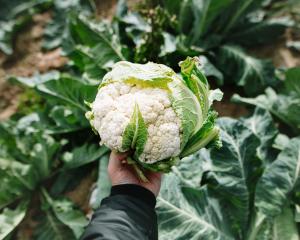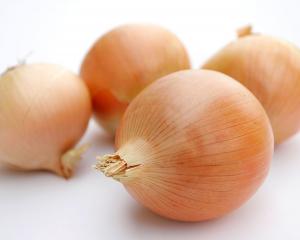Vegetables
Crop-rotation may sound overly scientific for the ordinary gardener but it is an important way of getting the most from the vegetable garden and, at the same time, minimising the risk of diseases such as club root in cabbages or basal rot in onions, garlic and leeks.
Designed so crops take different minerals from the soil each year, good rotation will take account of chemical and physical differences between plants. The basic rule is never to grow plants from the same family or type in the same spot two years in a row.
Leaving aside perennial vegetables such as rhubarb, globe artichokes and asparagus which stay in the same plot, divide your garden into three areas.
Make a list of which crops can be grouped this season: potatoes, celery, leeks, carrots, parsnips and beetroot in one group; peas, beans (all types), onions and spinach in the second; and brassicas (including brussels sprouts, cabbages, broccoli, cauliflowers and kohl rabi) in the third.
In the second season, grow tap-rooted plants (group one) in plot three, the ground previously used for brassicas. Put potatoes and the onion family into area one and brassicas in the remaining part of the garden. Year three sees brassicas in plot one, tap-rooted plants in bed two, and onions as well as potatoes in the third.
Continue this practice in subsequent years. A garden diary may make it easier to remember the movements or draw a computer-generated plan and mark what was sown or planted where, with planting or sowing dates.
If the weather is reasonably dry, dig any vacant ground roughly but do not try to cultivate the ground too finely at this time of the year or it can set like concrete as it dries.
Winter is a good time to sharpen and clean garden tools, and repair or clean garden furniture and shelves in the greenhouse or shed. If you are clever, wooden seed-boxes and compost bins can be made from scrap timber (old pallets are excellent for compost bins), and cold frames from old windows.
Put green rubbish in the compost heap, but take woody, prickly or diseased material to a landfill.
Even in midwinter, rhubarb and asparagus beds can be planted, weather permitting. Dig the ground deeply, add plenty of bulky manure plus some blood and bone and plant with the crowns about 2.5cm below the surface.
Jerusalem artichoke tubers, shallots and garlic can also be planted.
Flowers
Crop-rotation in the flower garden is also possible with some varieties of plants.
Stocks and wallflowers in mass displays exhaust the soil in similar ways and should not follow each other. Likewise, if dahlias are grown in the same soil year after year, they will make excessive demands on some soil elements and plant quality will eventually drop.
Herbaceous borders of perennial plants such as delphiniums can be replaced every two or three years. Lift the plants, enrich the bed with compost and replace the plants some distance from their previous positions.
Ideally, dahlias, gladioli, pansies, violas, tulips, hyacinths and narcissi should be planted in different areas of the garden each year.
Rose-planting time has arrived. In a perfect world, the gardener would have deeply dug the spot for new roses some weeks ago to give the ground time to settle naturally before planting. In reality, this may not be done yet, so put the bare-rooted roses in a corner of the vegetable garden until the site is ready.
Dig out holes for roses 1m apart and about 30cm deep. The depth depends on the soil type — shallower is best in heavy soil but deeper holes are recommended in light, sandy soils.
The holes should be wide enough to allow the roots to lie without obstruction. Form a slight mound in the centre of the hole. Cover with good soil and apply commercial rose fertiliser.
Fruit
Winter spraying of apples and pears with a winter oil spray will help control woolly aphids, scale insects and red spider. If you prefer not to spray, attracting waxeyes to the garden by putting a shallow container of sugar water on or near fruit trees will encourage them to clean up bugs.
Good garden hygiene is also important in preventing or controlling disease.












